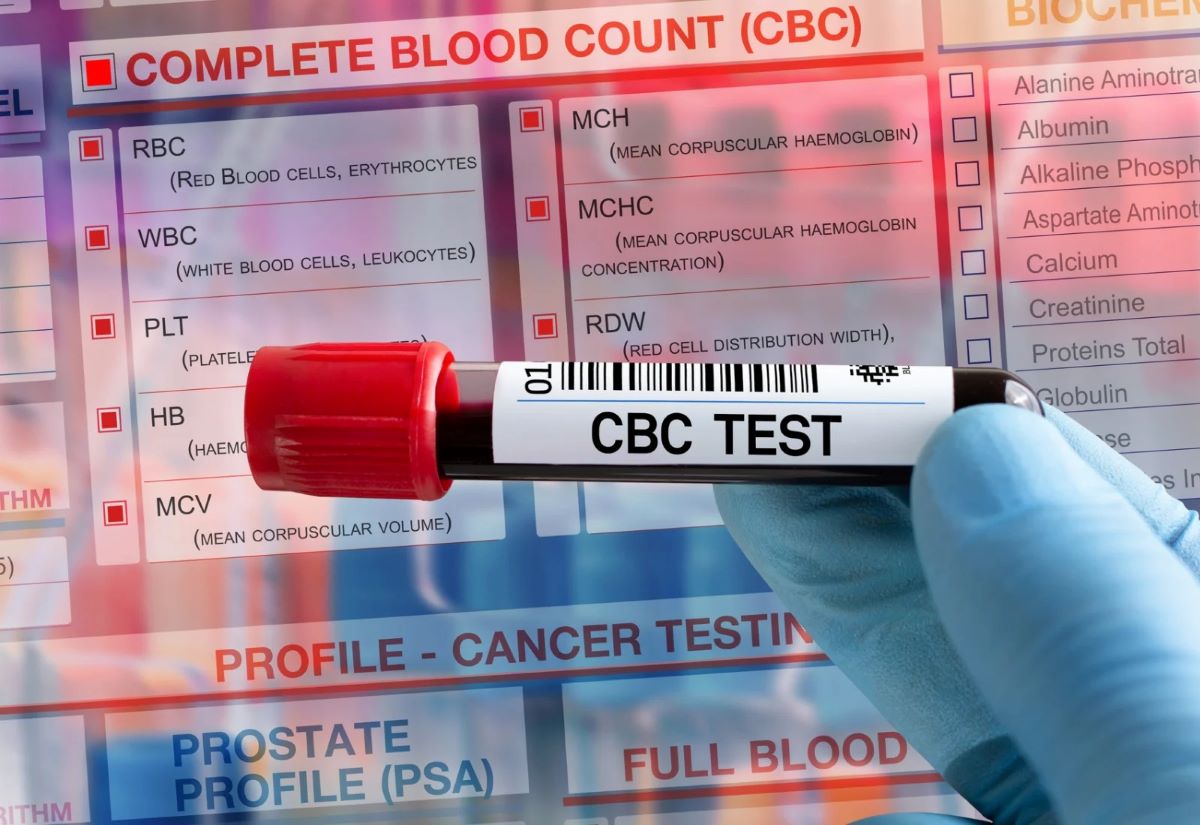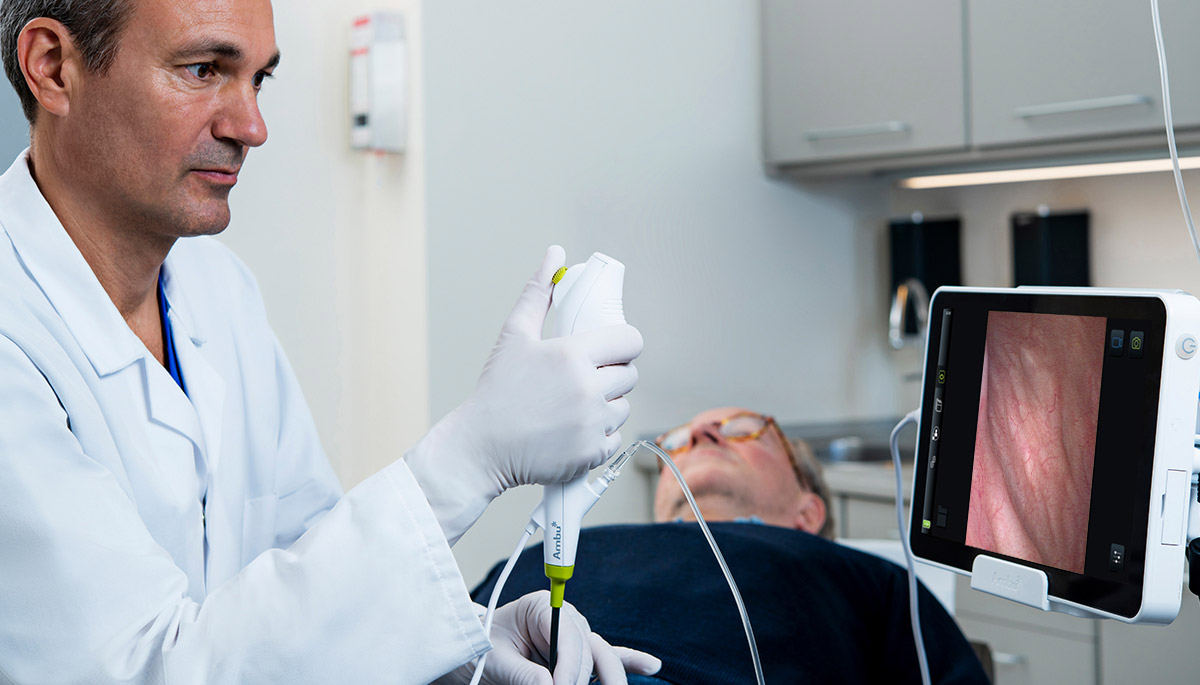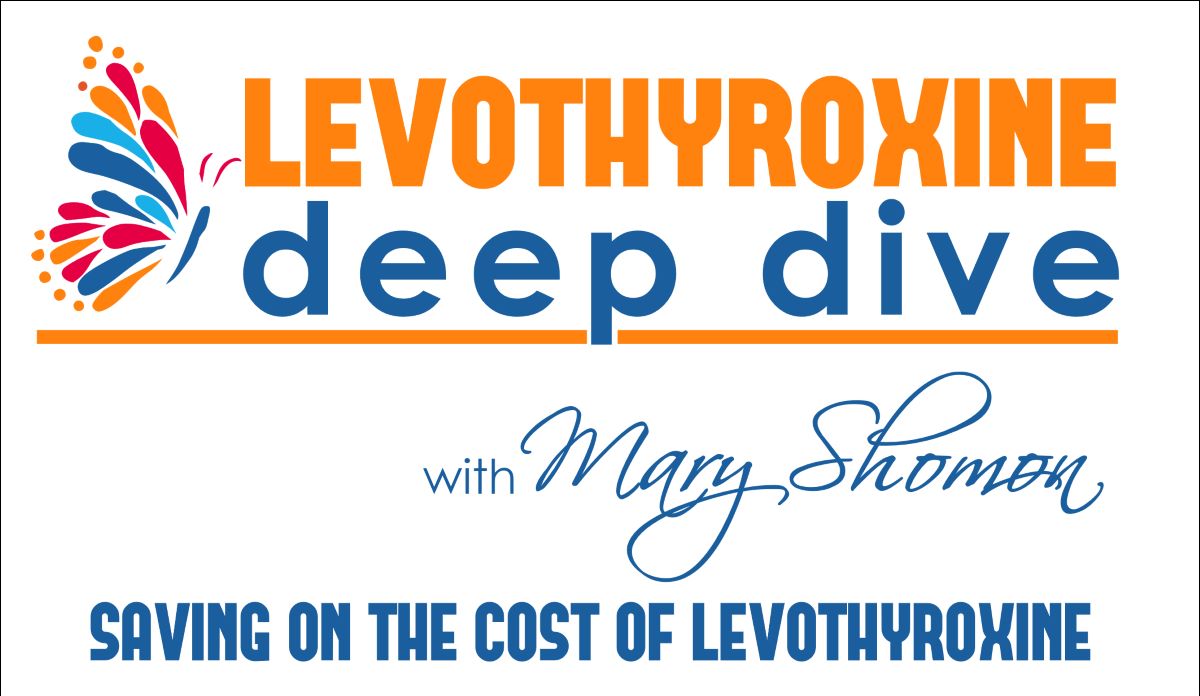

Finance
How Much Does A D&C Cost Without Insurance?
Published: November 6, 2023
Find out the cost of a D&C procedure without insurance coverage and explore financing options to manage your medical expenses.
(Many of the links in this article redirect to a specific reviewed product. Your purchase of these products through affiliate links helps to generate commission for LiveWell, at no extra cost. Learn more)
Table of Contents
Introduction
Dealing with medical procedures can be a daunting and stressful experience, especially when it comes to the financial aspect. A dilation and curettage (D&C) is a common gynecological procedure that is performed for various reasons, including the removal of abnormal tissue from the uterus, treating heavy or irregular menstrual bleeding, or performing an abortion. However, the cost of a D&C can vary significantly, especially if you don’t have insurance coverage.
In this article, we will delve into the details of how much a D&C can cost without insurance and explore various factors that can influence the overall expense. We will also provide insights into financing and payment options available to help individuals navigate the financial aspect of this procedure. Additionally, we will share some helpful tips on how to reduce D&C costs.
It is important to note that while this article aims to provide general information, the cost of a D&C can vary based on factors such as geographical location, healthcare provider, and individual circumstances. Therefore, it is always recommended to consult with your healthcare provider or medical billing department to obtain accurate and up-to-date information regarding the cost of a D&C in your specific situation.
Understanding D&C
A dilation and curettage (D&C) is a medical procedure commonly performed by gynecologists. It involves dilating or widening the cervix and then using specialized tools to remove tissue from the lining of the uterus. This tissue extraction can serve various purposes, such as treating certain gynecological conditions, diagnosing abnormalities, or performing an abortion.
The D&C procedure typically involves two primary steps: dilation and curettage. During the dilation phase, the cervix is gradually opened, allowing access to the uterus. This can be achieved using medications or a series of dilators. The second step, curettage, involves the use of a curette, a surgical instrument with a sharp or blunt edge, to gently scrape or suction out the tissue from the uterine lining.
D&C is a relatively quick procedure, usually lasting less than an hour. It is typically performed on an outpatient basis, meaning the patient does not need to stay overnight in the hospital. In some cases, however, an overnight stay may be required, depending on the specific circumstances and the patient’s overall health.
There are several reasons why a D&C may be performed:
- To remove tissue after a miscarriage: Following a miscarriage, some tissue may remain in the uterus, and a D&C can be performed to remove it.
- To treat abnormal bleeding: If a person experiences heavy or prolonged menstrual bleeding, a D&C may be recommended to remove excess tissue or polyps from the lining of the uterus.
- To diagnose or treat certain conditions: A D&C can be used to diagnose or treat conditions such as uterine fibroids, endometrial hyperplasia, or cancerous growths.
- To perform an abortion: In cases where a pregnancy needs to be terminated, a D&C can be performed.
- To collect tissue samples for testing: A D&C can be used to obtain tissue samples for further analysis and diagnosis, such as checking for cancerous or pre-cancerous cells.
It is important to note that the decision to undergo a D&C should always be made in consultation with a healthcare professional who can evaluate your specific medical situation and provide personalized advice and guidance.
Factors Affecting the Cost of D&C
The cost of a dilation and curettage (D&C) procedure can vary depending on several factors. Understanding these factors can help individuals anticipate and prepare for the potential costs associated with the procedure. Here are some key factors that can affect the cost of a D&C:
Geographical Location
The cost of healthcare services can vary significantly depending on the region and country you are in. Factors such as local market competition, cost of living, and healthcare infrastructure can all contribute to regional price differences. For example, metropolitan areas and regions with higher healthcare costs may have a higher cost for a D&C compared to rural areas or regions with lower costs of living.
Healthcare Provider
The choice of healthcare provider can also impact the cost of a D&C. Different healthcare providers may have varying fee structures and pricing policies. The cost can differ between private clinics, hospitals, or specialized gynecological centers. It is advisable to research and compare the prices offered by different providers in your area to find the most suitable option that fits your budget.
Complexity of the Procedure
The complexity of the D&C procedure can influence the cost. In some cases, a straightforward D&C may be performed using local anesthesia or minimal sedation, which can be less expensive. However, if additional procedures or interventions are required, such as hysteroscopy (a procedure to examine the uterus) or general anesthesia, the cost of the overall procedure may increase.
Diagnostic Testing
Prior to a D&C, diagnostic testing may be necessary to determine the underlying cause of symptoms or confirm a diagnosis. Tests such as ultrasounds, biopsies, or blood work can incur additional costs, which should be taken into account when estimating the total cost of the procedure.
Complications and Follow-up Care
In some cases, complications may arise during or after the D&C procedure, requiring additional medical attention and follow-up care. These complications can potentially increase the overall cost of the procedure. It’s important to consider the potential need for additional treatments, medications, or follow-up visits when assessing the cost of a D&C.
Keep in mind that these factors can interact and vary in each individual case. Consulting with your healthcare provider or medical billing department can provide you with a more accurate estimate of the potential costs involved in your specific situation.
Average Cost of D&C Without Insurance
Without insurance coverage, the cost of a dilation and curettage (D&C) procedure can pose a significant financial burden. The exact cost can vary depending on several factors, as mentioned earlier, but we can provide a rough estimate to give you an idea of what to expect.
In the United States, the average cost of a D&C without insurance coverage can range from $1,500 to $6,000 or more. However, it is important to note that these figures are approximate and can vary greatly based on the factors mentioned earlier, such as geographical location, healthcare provider, and the complexity of the procedure.
The cost breakdown of a D&C typically includes various components:
- Pre-operative consultation and evaluation: This may involve an initial examination, diagnostic tests, and consultations with specialists to determine the need for a D&C.
- Procedure cost: This includes the actual D&C procedure, including surgical equipment, anesthesia, and any additional interventions required.
- Post-operative care: This encompasses the cost of follow-up visits, medications, and any necessary tests or procedures to monitor your recovery.
It is crucial to remember that these costs are estimates and can vary. Discussing the specific costs with your healthcare provider or medical billing department will help you get a more accurate understanding of the expenses you may incur.
While the cost of a D&C without insurance can be significant, there are options available to help manage these expenses.
Financing and Payment Options
If you don’t have insurance coverage, there are alternative financing and payment options that may help alleviate the financial burden. These options include:
- Medical Financing: Some medical financing companies offer loans or credit cards specifically designed to cover medical expenses. These options allow you to spread out the cost of the procedure over manageable monthly payments.
- Payment Plans: Speak with your healthcare provider to inquire about the possibility of setting up a payment plan. Many providers are willing to work out a payment arrangement that fits your financial situation.
- Charitable Organizations and Assistance Programs: Some charitable organizations or government programs may provide financial assistance or grants to individuals who need help covering medical expenses. Research local resources or reach out to organizations that specialize in medical expense assistance.
- Negotiating a Cash Payment: In some cases, healthcare providers may offer a discounted rate if you are able to pay the full cost upfront in cash. It’s worth discussing this option with your healthcare provider to see if it’s a possibility.
Remember to explore these options and discuss them with your healthcare provider to ensure you are aware of all the potential avenues for financial assistance.
Financing and Payment Options
Covering the cost of a dilation and curettage (D&C) procedure without insurance can be challenging. However, there are financing and payment options available that can help individuals manage the financial burden. Exploring these options can provide some relief and flexibility when it comes to paying for the procedure.
Medical Financing
Medical financing companies offer loans or credit cards specifically designed for medical expenses. These options allow individuals to borrow money to cover the cost of the D&C procedure and make monthly payments over a designated period. Some medical financing programs even offer promotional interest rates or low monthly payment plans, alleviating the immediate financial burden.
Payment Plans
Many healthcare providers are willing to work with patients to set up payment plans. This allows individuals to spread out the cost of their D&C over an agreed-upon timeframe. Payment plans can help make the procedure more affordable by breaking down the total cost into manageable monthly installments. It’s important to reach out to your healthcare provider’s billing department to discuss payment options and determine a plan that suits your financial situation.
Charitable Organizations and Assistance Programs
There are charitable organizations and government assistance programs that provide financial aid to individuals who are unable to afford necessary medical procedures. These organizations may offer grants or financial assistance to help cover the expenses associated with a D&C. Research local resources, community foundations, and nonprofit organizations that specialize in medical expense assistance to explore potential sources of financial support.
Negotiating a Cash Payment
Some healthcare providers offer discounts for patients who can pay for their D&C procedure upfront in cash. This option can potentially help reduce the overall cost of the procedure. Before proceeding with this option, it is advisable to discuss the possibility of a cash payment discount with your healthcare provider to determine if they have any available options.
Health Savings Accounts (HSAs) or Flexible Spending Accounts (FSAs)
If you have a Health Savings Account (HSA) or a Flexible Spending Account (FSA), you may be able to use the funds in these accounts to cover the cost of a D&C. HSAs and FSAs allow individuals to set aside pre-tax money for qualified medical expenses. Consult with your benefits provider or financial advisor to understand any restrictions and requirements regarding the use of these funds for the specific medical procedure.
When considering these financing and payment options, it’s important to weigh their benefits and drawbacks and choose the one that aligns with your financial situation and long-term goals. Remember to communicate openly with your healthcare provider or medical billing department to ensure you have a clear understanding of the available options and can make an informed decision.
Tips for Reducing D&C Costs
While the cost of a dilation and curettage (D&C) procedure can be substantial, there are several strategies you can employ to help reduce the overall expenses. Below are some helpful tips to consider:
Shop around for Affordable Providers
Research and compare the prices offered by different healthcare providers in your area. Get quotes for the procedure from multiple clinics, hospitals, or specialized gynecological centers. This will help you identify providers that offer competitive prices and potentially lower the overall cost of your D&C.
Inquire about Cash Discounts
Don’t be afraid to ask healthcare providers if they offer cash discounts for the D&C procedure. Some providers may offer reduced rates for patients who pay upfront in cash, as it eliminates additional administrative costs associated with insurance billing.
Consider Outpatient Facilities
Opt for an outpatient facility rather than a hospital setting, if possible. Outpatient facilities typically have lower overhead costs compared to hospitals, which can translate into more affordable pricing for the D&C procedure.
Discuss Payment Plans
Engage in an open conversation with your healthcare provider’s billing department about the possibility of setting up a payment plan. Many providers are willing to work out a payment arrangement tailored to your financial situation, allowing you to spread out the cost of the D&C over a period of time.
Utilize Medical Financing
If paying for the D&C procedure upfront is not feasible, explore medical financing options. Medical financing companies offer loans or credit cards specifically designed to cover medical expenses. This option allows you to make manageable monthly payments over an extended period, reducing the immediate financial burden.
Review Insurance Coverage
If you have insurance, thoroughly review your policy to understand what aspects of the D&C procedure are covered. Familiarize yourself with any deductibles, copayments, or out-of-pocket maximums. Knowing the details of your insurance coverage can help you effectively plan and budget for the procedure.
Seek Financial Assistance
Research charitable organizations, government programs, and local resources that provide financial assistance for medical expenses. These organizations may offer grants or financial aid specifically for individuals in need of assistance with the cost of a D&C procedure.
Remember, it’s important to balance cost-saving strategies with the quality and safety of the healthcare you receive. Prioritize finding a reputable and experienced healthcare provider to ensure the best possible outcome for your D&C procedure.
Conclusion
A dilation and curettage (D&C) can be a necessary medical procedure for various reasons, but it can also come with a significant financial burden, especially without insurance coverage. Understanding the factors that influence the cost of a D&C and exploring financing and payment options can help individuals navigate the financial aspect of the procedure.
Geographical location, healthcare provider, complexity of the procedure, and additional diagnostic tests are factors that can affect the cost of a D&C. On average, the cost of a D&C without insurance in the United States can range from $1,500 to $6,000 or more. However, it’s essential to consult with your healthcare provider or medical billing department for a more accurate estimate based on your specific circumstances.
To manage the cost, consider options such as medical financing, payment plans, charitable organizations, negotiating cash payments, and utilizing Health Savings Accounts or Flexible Spending Account funds. Shopping around for affordable providers and discussing cash discounts can also help reduce expenses.
While cost-saving measures are important, it’s crucial to prioritize the quality and safety of the procedure. Choosing a reputable healthcare provider is vital to ensure the best possible outcome for your D&C.
Remember, this article provides general information and tips, but it’s always advisable to consult with your healthcare provider or medical billing department for personalized advice regarding the cost of a D&C in your specific situation. By being proactive and exploring your options, you can alleviate some of the financial stress associated with a D&C and focus on your overall well-being.














